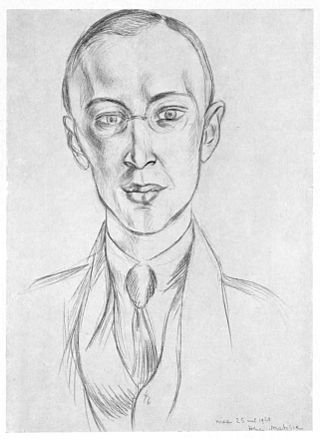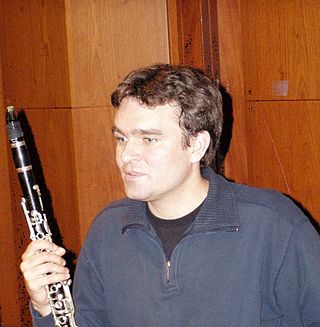Related Research Articles

A musical ensemble, also known as a music group or musical group, is a group of people who perform instrumental and/or vocal music, with the ensemble typically known by a distinct name. Some music ensembles consist solely of instrumentalists, such as the jazz quartet or the orchestra. Other music ensembles consist solely of singers, such as choirs and doo-wop groups. In both popular music and classical music, there are ensembles in which both instrumentalists and singers perform, such as the rock band or the Baroque chamber group for basso continuo and one or more singers. In classical music, trios or quartets either blend the sounds of musical instrument families or group instruments from the same instrument family, such as string ensembles or wind ensembles. Some ensembles blend the sounds of a variety of instrument families, such as the orchestra, which uses a string section, brass instruments, woodwinds, and percussion instruments, or the concert band, which uses brass, woodwinds, and percussion.

Orchestration is the study or practice of writing music for an orchestra or of adapting music composed for another medium for an orchestra. Also called "instrumentation", orchestration is the assignment of different instruments to play the different parts of a musical work. For example, a work for solo piano could be adapted and orchestrated so that an orchestra could perform the piece, or a concert band piece could be orchestrated for a symphony orchestra.
The Pomp and Circumstance Marches, Op. 39, are a series of five marches for orchestra composed by Sir Edward Elgar. The first four were published between 1901 and 1907, when Elgar was in his forties; the fifth was published in 1930, a few years before his death; and a sixth, compiled posthumously from sketches, was published in 1956 and in 2005–2006. They include some of Elgar's best-known compositions.

Capriccio espagnol, Op. 34, is the common Western title for a five movement orchestral suite, based on Spanish folk melodies, composed by the Russian composer Nikolai Rimsky-Korsakov in 1887. It received its premiere on 31 October 1887, in St. Petersburg, performed by the Imperial Orchestra conducted by the composer. Rimsky-Korsakov originally intended to write the work for a solo violin with orchestra, but later decided that a purely orchestral work would do better justice to the lively melodies. The Russian title is Каприччио на испанские темы.

Sergei Prokofiev wrote his Symphony No. 3 in C minor, Op. 44, in 1928.
Walter Sinclair Hartley was an American composer of contemporary classical music.

The Symphony No. 3 in C major, Op. 52, is a three-movement work for orchestra written from 1904 to 1907 by the Finnish composer Jean Sibelius.

The Miraculous Mandarin Op. 19, Sz. 73, is a one act pantomime ballet composed by Béla Bartók between 1918 and 1924, and based on the 1916 story by Melchior Lengyel. Premiered on 27 November 1926 conducted by Eugen Szenkar at the Cologne Opera, Germany, it caused a scandal and was subsequently banned on moral grounds. Although more successful at its Prague premiere, it was generally performed during the rest of Bartók's life in the form of a concert suite, which preserves about two-thirds of the original pantomime's music.
Alexander Scriabin's Symphony No. 3 in C minor, entitled Le Divin Poème, was written between 1902 and 1904 and published in 1905. It was premiered in Paris on 29 May of that year.
David Frederick Stock was an American composer and conductor.
Gary Alan Kulesha is a Canadian composer, pianist, conductor, and educator. Since 1995, he has been Composer Advisor to the Toronto Symphony Orchestra. He has been Composer-in-Residence with the Kitchener-Waterloo Symphony (1988–1992) and the Canadian Opera Company (1993–1995). He was awarded the National Arts Centre Orchestra Composer Award in 2002.
John Corigliano's Symphony No. 1 for Orchestra was written between 1988 and 1989 during the composer's tenure as the first Composer-In-Residence for the Chicago Symphony Orchestra. The symphony's first performance was by the Chicago Symphony conducted by Daniel Barenboim on March 15, 1990.

Partita, five reminiscences for large orchestra is a collection of musical pieces by Jörg Widmann. It was written for the 275th anniversary of the Leipzig Gewandhaus Orchestra in 2018.
The Symphony No. 4, Op. 49, is an orchestral composition by the Finnish composer Aulis Sallinen, who wrote the piece from 1978–79 for a commission from the City of Turku, to celebrate its 750th anniversary. The Turku Philharmonic Orchestra premiered the work on 9 August 1979, under the direction of its principal conductor, Pertti Pekkanen.
The Symphony No. 6, From a New Zealand Diary, Op. 65, is an orchestral composition by the Finnish composer Aulis Sallinen, who wrote the piece from 1989–90. The New Zealand Symphony Orchestra, the commissioning institution, premiered the work on 6 September 1990 in Napier, under the baton of Sallinen's longtime advocate, Okko Kamu. Sallinen and his wife had vacationed in New Zealand the year prior, providing the composer with inspiration for the symphony, which—though properly symphonic in scope and in structure—has been described as involving "tone painting"; indeed, each of the four movements contains a descriptive title, unusual for a Sallinen symphony.

The Concerto for Viola and Orchestra is a viola concerto by Soviet and German composer Alfred Schnittke. It was written in the summer of 1985. Its dedicatee is viola player Yuri Bashmet, who gave the work its world premiere with the Royal Concertgebouw Orchestra conducted by Lukas Vis at the Concertgebouw in Amsterdam on 9 January 1986.

The Concerto no. 4 for Violin and Orchestra is a violin concerto by Soviet and German composer Alfred Schnittke. It was commissioned by the 34th Berlin Festival and written in 1984. Its first performance was given in Berlin on 11 September 1984 with dedicatee Gidon Kremer as soloist and the Berlin Philharmonic Orchestra conducted by Christoph von Dohnányi.
Symphony No. 6 by Russian composer Alfred Schnittke was composed in 1992. It was commissioned by cellist and conductor Mstislav Rostropovich and the National Symphony Orchestra of Washington, who together gave its first performance in Moscow on 25 September 1993.
Russian composer Alfred Schnittke's Symphony No. 8 was composed in 1994. Its dedicatee Gennady Rozhdestvensky conducted the Royal Stockholm Philharmonic Orchestra in the symphony's premiere in Stockholm on 10 November 1994.
References
- ↑ "Schnittke, Alfred - Symphony No.7 (1993)". Boosey & Hawkes . Retrieved 22 February 2019.